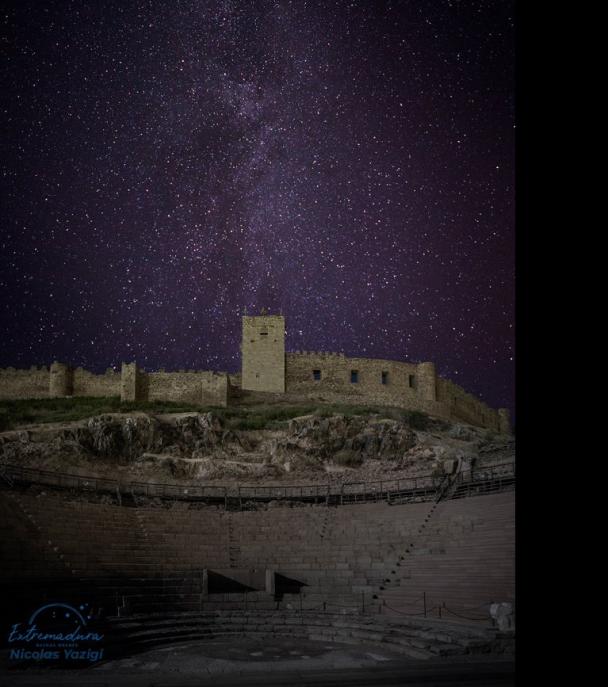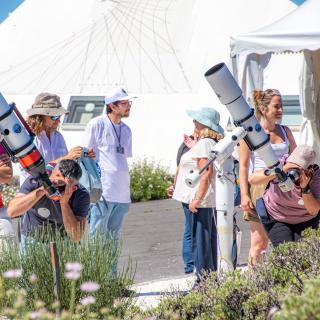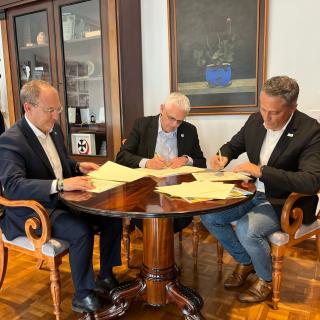Next Thursday, June 21st at 10:07 the Earth will pass through a special point in its orbit around the Sun: the June solstice. The height of the Sun at mid-day will be a maximum in the northern hemisphere, where the summer solstice will be celebrated, and a minimum in the southern hemisphere, where it will be the winter solstice, marking the beginning of summer and winter respectively. The position of the Sun will hardly change for several days, which is why it is called a solstice (from the latin solstitium, derived from sol and sistere, to remain still). In practical terms, the day of the summer solstice is the longest, in terms of daylight, in the year. Around that date we find the day when the Sun rises earliest, and the day when the Sun sets latest. In the southern hemisphere, this occurs in December.
Rome and the sky
The study of the orientation of the Roman cities in the Iberian Peninsula shows that the spatial arrangement of the main roads in a settlement was not arbitrary. On the contrary in a number of cases it reflects symbolic factors using the position of the Sun on important dates in the Roman calendar, such as the traditional day of the founding of Rome (21 April) or the summer and winter solstices. This latter case explains the orientation of the main road (the decumano maximo) of Metellinum, present day Medellín. The main road in this Roman town, which followed the course of what today is the Calle Palacios, had a special orientation. It pointed towards sunrise at the winter solstice, and sunset at the summer solstice.
The longest and shortest days of the year have been used as time markers, and they have been used as important festivals in a variety of cultures throughout history. In this region the layout of the roads could have been based on these astronomical events both in the Roman and the pre-Roman calendars.
Live from Medellín
Within the initiatives against light pollution(LPI) of the European STARS4ALL project, (stars4all.eu) and with the collaboration of the Office of the Director General for Tourism of the Government (Junta) of Extremadura the sky-live.tv channel will broadcast live the sunset from Medellín (Badajoz, Extremadura).
The broadcast will include the participation of the IAC researcher Andrea Rodríguez, a specialist in Roman cities and camps, who is a member of the Archeoastronomy group of the IAC. “We are sure that the Roman architects were familiar with the sky and Medellín is a clear example” says Rodríguez, and in more detail “In Metellinum, present day Medellín, we find a clear example of a city oriented by the solstices”
The date is next Wednesday, 20th June at 19:15 (UT), (20:15 Canary local time, 21:15 Central European Standard Time)
“After our visits to the monumental complexes in the area of Cuzco, and to Luxor, the neuralgic centre of ancient Egypt, a visit to a Roman city in the Peninsula was a must. From Medellín we can understand the celestial orientations of Roman towns” comments Miquel Serra-Ricart, the astronomer of the IAC who is in charge of the broadcast.
STARS4ALL is a project funded by the H2020 Programme of the European Union under agreement number 688135. In STARS4ALL eight institutions are participating (UPM, CEFRIEL, SOTON, ECN, ESCP, Europe, IAC, IGB, and UCM), from six countries. The project “Good Night, Extremadura” is in the framework of the Night-time strategy of the Government (Junta) of Extremadura (Extremadura 2030).
In addition three Spanish Supercomputer Centres: the Extremadura Centre for Advanced Technology (CETA-CIEMAT), the Consorci de Serveis Universitaris de Catalunya (CSUC) and the Instituto de Astrofísica de Canarias (IAC), who collaborate in the distribution and broadcasting of the website sky-live.tv.
Contact at the IAC: Miquel Serra-Ricart, investigador del IAC, mserra [at] iac.es (mserra[at]iac[dot]es)
- STARS4ALL website: http://www.stars4all.eu/
- Educational activities: http://astroaula.net/actividades/
- Live: http://www.sky-live.tv/retransmisiones/medellin-2018
Channels:
- YouTube: Medellín https://youtu.be/fOblC_z9Jh0
- Facebook: https://www.facebook.com/skylivetv




